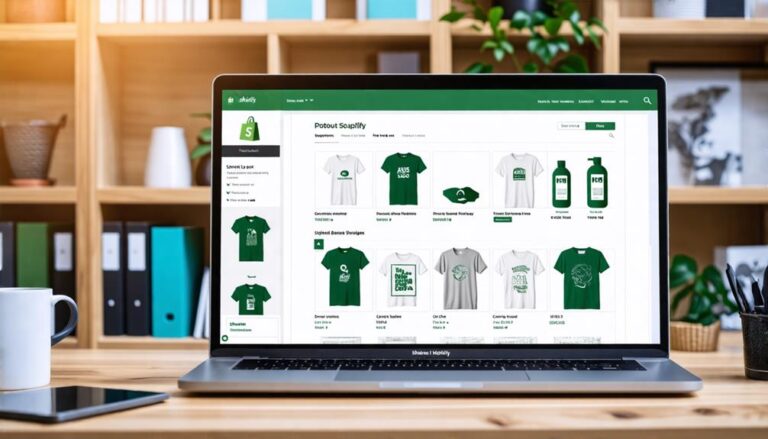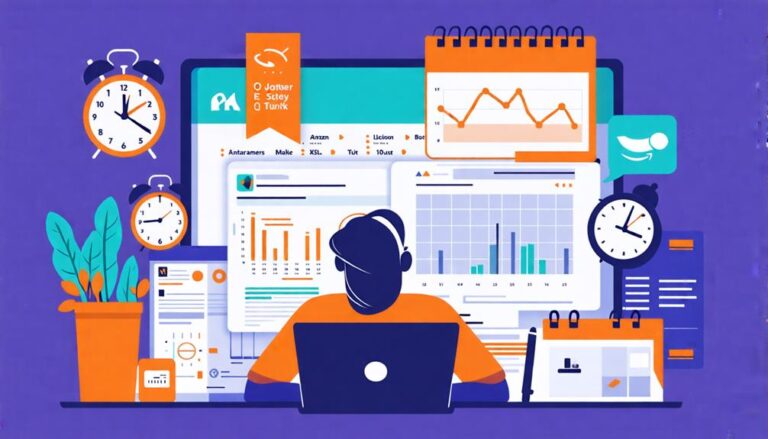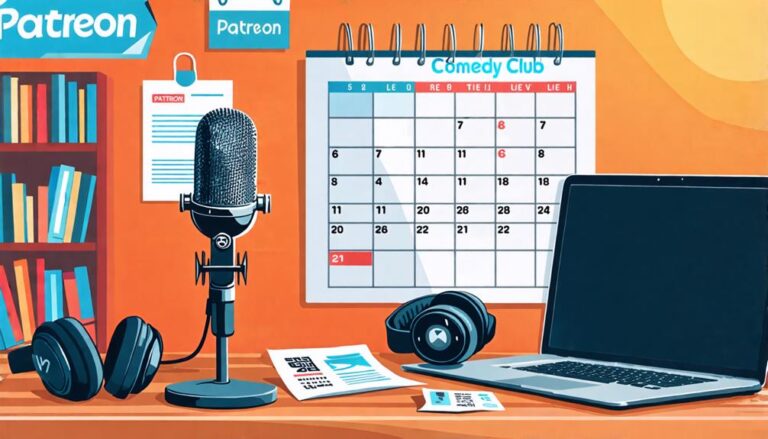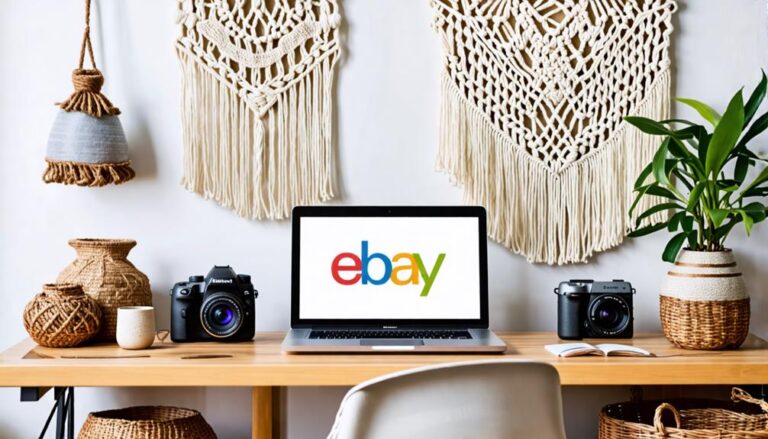Spotify's freemium model has undeniably revolutionized the way we consume music, offering vast libraries at minimal to zero cost for listeners.
However, this feature does not come without its controversies, particularly concerning the streaming royalties paid to artists. These payments are often minimal, leading to debates about whether an artist can sustain a career through streaming alone.
The current process of revenue distribution lacks clarity, sparking discussions about its fairness and efficiency. As the industry wrestles with these issues, innovative technologies like blockchain might offer potential solutions.
This side hustle of streaming music on Spotify requires understanding and navigating these complexities. Here's how to embark on it to ensure fair compensation while still providing accessibility for your audience.
How Spotify's Model Works
Spotify's model, which can be analogized to a side hustle strategy, operates on a freemium structure, offering both ad-supported free access and premium subscription options. This dual approach allows Spotify to cater to a broad audience, enhancing user experience by providing accessible music streaming for all, much like a side hustle would cater to different income brackets.
The free tier, supported by advertising revenue, serves as an entry point for users, offering them a taste of Spotify's extensive music library and personalized playlists, similar to how a side hustle may start by providing a basic service for free or at a lower cost. However, it comes with limitations such as ads, lower audio quality, and restricted offline listening.
The premium subscription model, on the other hand, aims to deliver a superior user experience by eliminating these constraints, much like how a side hustle may evolve into a full-time venture offering more comprehensive services. Subscribers enjoy ad-free streaming, high-quality audio, and the ability to download music for offline playback. In addition, premium users gain access to exclusive features such as Spotify Connect, which allows seamless integration with various devices.
This freemium structure is essential for Spotify's growth strategy, as it creates a pipeline for converting free users into paying subscribers, much like a side hustle would rely on converting one-time clients into regular customers. By continuously enhancing the user experience and offering compelling subscription models, Spotify seeks to increase its market share and sustain its competitive edge in the highly dynamic music streaming industry, similar to how a side hustle would aim for growth and sustainability.
Revenue Distribution
Understanding how revenue is distributed among independent artists, podcast creators, and other stakeholders is fundamental to grasping the financial mechanics behind Spotify's freemium model, especially when it's used as a side hustle.
Spotify generates revenue primarily through subscriptions and advertisements. This revenue is pooled and then allocated based on a complex system of royalty calculations. Payments are made to rights holders, which may include independent artists, podcast creators, and distributors, before being passed on to the content creators themselves.
Royalty calculations consider several factors such as the total number of streams, the listener's location, and the type of subscription. The pro-rata model used by Spotify means that revenue is distributed based on the share of total streams each content creator receives. However, this model has been criticized for lacking revenue transparency. Stakeholders often express concerns about the opaque nature of the distribution process and the exact percentages deducted at each stage.
The financial relationship between Spotify, independent artists, podcast creators, and other stakeholders is further complicated by any pre-existing contractual agreements. Independent artists often receive a significant portion of the revenue, which can affect the final payout to podcast creators and others using the platform as a side hustle.
Consequently, understanding revenue distribution on Spotify requires an analysis of both the platform's payout structures and the broader digital content creation ecosystem.
Impact on Artists
The financial implications of streaming royalties have raised significant discussions within the music industry, particularly relating to the impact on artists pursuing music as a side hustle. The primary concern is the adequacy of artist compensation. Critics argue that the income generated from streaming platforms like Spotify doesn't fairly remunerate artists, especially independent musicians who rely on these platforms while juggling other jobs.
Streaming services offer a wider reach and ease of access, but the small payouts per stream often result in minimal income for individual artists. This is especially challenging for those treating music as a part-time endeavor, as the low earnings can discourage them from continuing their creative pursuits.
Furthermore, the evolution towards streaming has altered creative control. Artists, especially those managing music as a side hustle, are increasingly compelled to create music that aligns with algorithmic preferences and popular trends to maximize streams and, consequently, their part-time income. This pressure can curb artistic innovation as musicians may have to prioritize commercial success over creative exploration due to financial constraints.
The lack of transparency in royalty distribution also remains an issue, with many part-time artists unsure of how their earnings are exactly determined. This lack of clarity intensifies concerns about equitable compensation and can increase dissatisfaction within the community of artists balancing their passion for music with other work responsibilities.
Industry Debates
Amidst the ongoing discussions about income from side hustles, stakeholders are deeply divided on the best approach to secure fair compensation for individuals. Central to these debates are differing opinions on how to achieve transparency and equity in the distribution of income. Advocates for change argue that the current model disproportionately benefits major companies and top-tier workers, leaving independent individuals at a disadvantage.
Key points of contention include:
- Compensation Models for Side Hustlers: Proposals range from a user-centric payment system, where income is distributed based on individual client activity, to a pro-rata system, which pools revenue and allocates them based on total work done.
- Income Transparency: Many call for greater visibility into how side hustle income is calculated and distributed, advocating for clear, accessible breakdowns of payment structures.
- Revenue Sharing: Some suggest revisiting the percentage of revenue that platforms retain versus what they pay out to side hustlers, arguing for a more equitable split.
- Contractual Reforms: There is a push for revising contracts between individuals and companies to guarantee workers receive a fair share of income.
These debates underscore the complexity of formulating a solution that balances the interests of all parties involved while fostering a sustainable and fair side hustle ecosystem.
Future of Streaming Royalties
As the digital landscape continues to evolve, the future of streaming royalties presents both challenges and opportunities for artists, platforms, and consumers alike, especially for those pursuing music as a side hustle.
One significant challenge is ensuring royalty transparency, a critical issue that has perplexed many part-time musicians. Artists often struggle to understand how their earnings are calculated, leading to widespread dissatisfaction. Enhanced transparency measures are essential to foster trust and fairness, especially for those relying on this income to supplement their primary jobs.
Streaming innovations are poised to reshape the royalty landscape, offering new avenues for those with a side hustle in music. The advent of blockchain technology, for instance, promises immutable, transparent records of music consumption and royalty distribution. This could streamline the royalty payment process, making it more efficient and reliable for part-time artists.
Additionally, the integration of artificial intelligence in music discovery and recommendation algorithms can potentially increase exposure for these artists, thereby boosting their earnings.
Moreover, new business models such as user-centric payment systems, where royalties are distributed based on individual user listening habits, are being explored. This approach could potentially offer a more equitable distribution of revenues, aligning artists' earnings more closely with their actual audience engagement.
This could be particularly beneficial for those pursuing music as a side hustle, as it could more accurately reflect the popularity of their work.
Conclusion
Spotify's freemium model has undeniably democratized music access but has also revealed significant flaws in revenue distribution, particularly impacting independent artists.
The current system's lack of transparency and insufficient compensation have fueled widespread industry debates.
As the streaming landscape continues to evolve, emerging technologies like blockchain offer potential avenues for more equitable royalty distribution.
Addressing these challenges is essential for ensuring a sustainable and fair ecosystem for all stakeholders in the music industry.

















































0
View comments